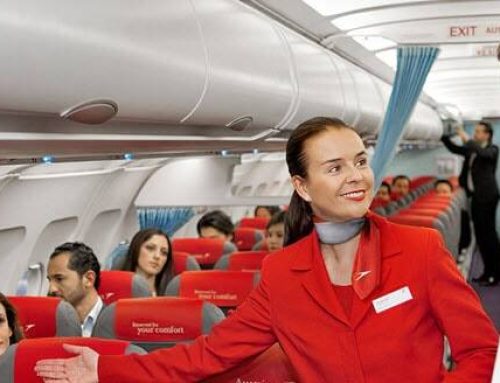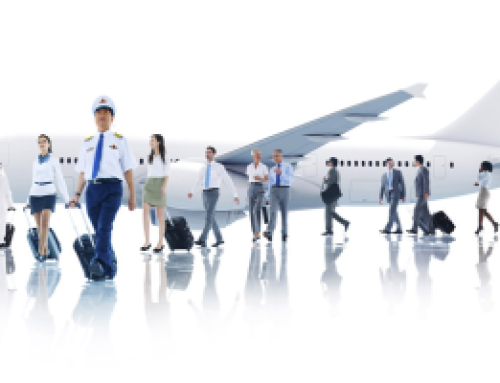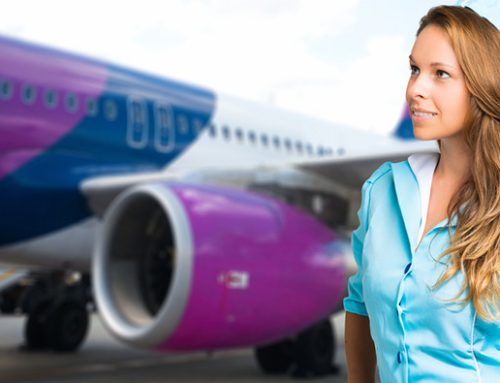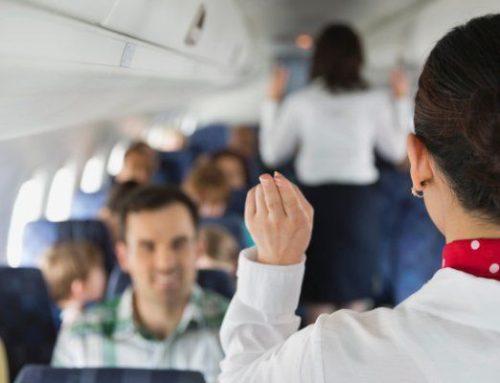The Principles of Flight :
So what makes an aeroplane fly?
There are four forces that act on an aircraft in flight, and when you understand these, the mystery, although still a marvel to many, will be lifted.
The forces are:
1. Lift;
2. Weight or gravity;
3. Thrust; and
4. Drag.
Lift is the force that opposes weight or gravity, and as a result, supports the aircraft whilst airborne. The wings are the primary source of lift. The wing creates lift because it has a curved upper surface and a flat lower surface. As the aircraft moves through the air, some air passes over the top surface of the wing and some passes under the wing. The wing, having a curved surface on top, forces air going over the top of the wing to speed up relative to the air speed on the underside of the wing as the aircraft moves through the air.
Therefore, the relative air pressure under the wing is higher. And like a balloon that pops, air moves from a high pressure to a low pressure, and when it does this around the wing of an aero plane, it in effect creates a lift component. To increase that lift component, you need to increase the curvature of the wing or forward speed of the aircraft to create a greater pressure differential.
It should be noted that the pressure differential is only small compared to the surrounding atmosphere. However, the wing is so big compared to the aircraft weight to be lifted, and the speed of the aircraft is so fast, that sufficient upward force is produced for the ‘lift’ required to be sufficient for flight to occur.
The speed at which flight occurs for a given weight (and flap setting) is obviously the minimum speed at which that aircraft will fly, and this is known as the stall speed. Pilots will always maintain a safe margin over this stall speed. Flap settings are variable and extending the flaps and slats enables more lift to be created by increasing the curvature of the wing, which results in a greater pressure gradient. This means that a given weight will be supported (flight happens) at a higher speed with low or no flap setting, or at a consistently lower speed at an ever greater flap setting.
Weight/Gravity
All aircraft have maximum weights for takeoff and landing, which is why your passenger luggage is weighed. Standard weights are used for people as an average weight. This is 77kg+7kgs for hand luggage = 84kg. This allowance is used for adults and the averages say that the two 51kg women sitting in row 8 will account for the 150 KG man in row 9.
An A320 has a total takeoff weight of about 75,000 kgs. To put this into perspective, a Mazda 2 weighs in at 960kgs. Therefore, an A320 at max takeoff weight is equivalent to 78 Mazda 2’s in weight!
The maximum landing weight of an aircraft is always lower than its maximum takeoff weight because the forces in a landing are far greater than on takeoff. If the same weight was allowed for landing, the undercarriage of the aircraft would have to be reinforced to a point that the aircraft would be too heavy, and therefore, uneconomical for normal passenger transport. Using round figures, the approximate passenger weight on an A320 180seat aircraft is 15,000kgs. Maximum weight of full fuel is 18,000kgs. Passenger baggage weight is 14,000kgs. The empty weight of the aircraft is about 35,000kgs.
Now you’ll notice that these figures add up to a weight greater than maximum stated takeoff weight of 75,000kgs. The total of the above of 82,000kgs would mean that a component of weight would have to be reduced until max weight is reached. This could be any of the variables: number of passengers, amount of fuel, or a reduction of cargo weight.
Weight and balance
Just a note here to say that the aircraft itself and everything in it and on it, such as coffee makers, aircraft seats, passengers, galley equipment, crew, crew seats, etc., have their own weight and position in the aircraft. For flight purposes, the centre of gravity, or C of G, must be calculated for each and every flight. In short, this is because the aircraft is controlled in flight through forces that are placed at a leveraged distance from the C of G. That is, if the C of G moves too far forward or rearward, the forces to maintain normal flight will be exceeded. The C of G therefore has limits, and this is referred to as the operating envelope.
Thrust
Thrust is the power (or more technically, the force) produced by the aircraft engines. A jet engine draws air in at the front of the engine and it mixes with fuel, which combusts (burns) and creates incredible or developed thrust that forces out the back of the engine, thus accelerating the aircraft forward.
The A320 can produce about 12,000kgs of thrust at full power, and like a car with the accelerator flat to the floor, it will be ‘heavy on the juice.’ At takeoff, the fuel is burnt at the rate of about 2,500 kgs per engine per hour, or 5000kgs per hour total. Takeoff power is only used for a limited time from the takeoff roll to just after becoming airborne and once in the cruise fuel burn drops to about 2000kgs (total) of fuel per hour.
Drag
When you put your hand outside a car window at speed flat to the wind, you will feel the wind push your hand back. This is effectively your hand creating resistance against the wind that the car has to overcome in order to keep moving forward. In aviation, this is referred to as ‘drag.’ An aircraft has to overcome drag in order to be able to fly. Fuel is therefore burned to create thrust in order to overcome drag to the point that it will become airborne and fly at a given speed.
There are two types of drag
1. Induced drag, and
2. Parasite drag
Induced drag is drag is created or induced in the process or creating lift. Parasite drag is drag caused by pushing the aeroplane through the air. When they are combined they are called total drag and it is total drag that has to be overcome by thrust in order for an aircraft to fly.







Leave A Comment
You must be logged in to post a comment.